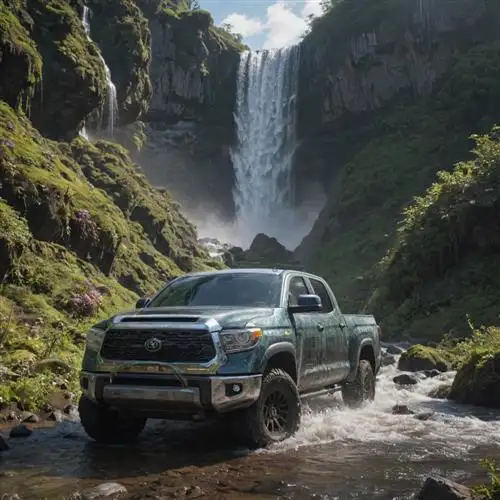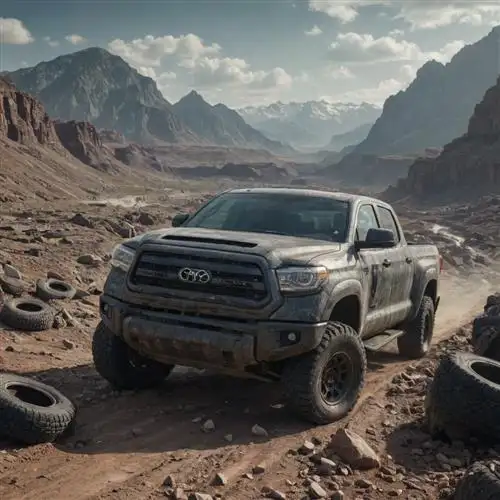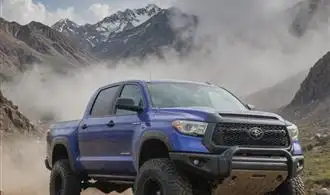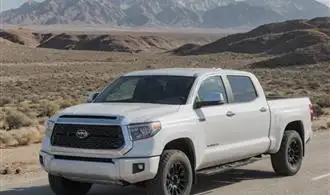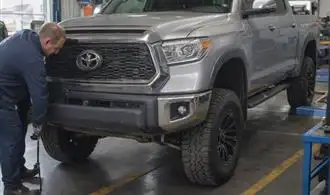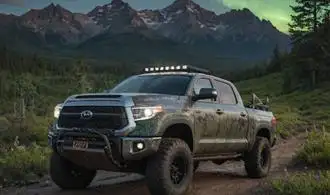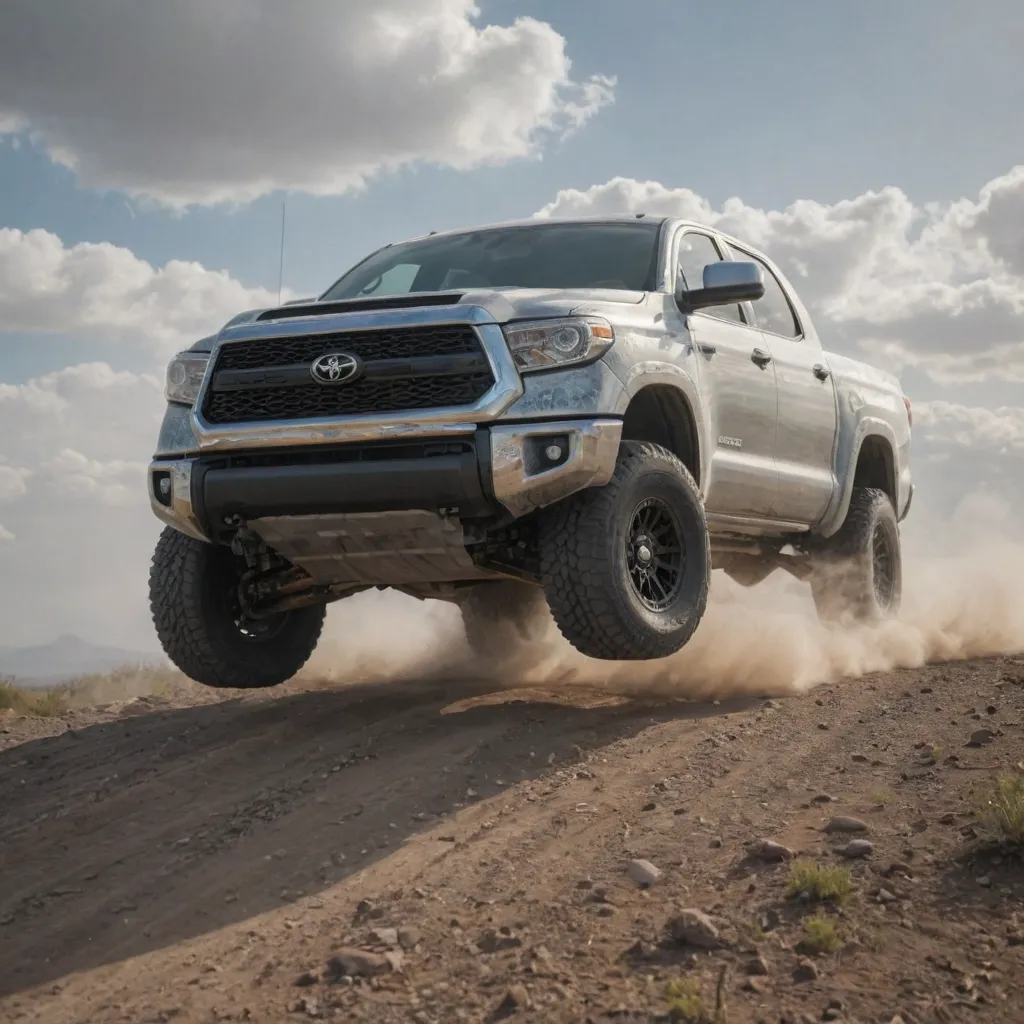
Importance of Regular Tundra Maintenance
Regular maintenance is crucial for the longevity and optimal performance of your Toyota Tundra. Neglecting maintenance can lead to costly repairs, decreased fuel efficiency, and even safety issues. Adhering to the manufacturer's recommended maintenance schedule is essential to ensure your Tundra runs smoothly and maintains its value over time.
One of the primary benefits of regular Tundra maintenance is the preservation of your vehicle's engine. Regularly changing the oil and filter, as well as monitoring fluid levels, helps to prevent premature engine wear and tear. Neglecting these essential tasks can result in sludge buildup, increased friction, and even engine failure, which can be an expensive and inconvenient problem to address.
Proper tire maintenance is another crucial aspect of Tundra upkeep. Regularly rotating and balancing your tires, as well as checking the tire pressure, can improve fuel efficiency, extend the life of your tires, and enhance the overall handling and safety of your vehicle. Neglecting tire maintenance can lead to uneven wear, decreased traction, and even blowouts, which can be dangerous and costly to repair.
Regular maintenance of your Tundra's braking system is also essential. This includes inspecting the brake pads, rotors, and calipers, as well as ensuring the brake fluid is at the appropriate level. Neglecting brake maintenance can result in decreased braking performance, which can compromise your safety and the safety of other drivers on the road.
In addition to these core maintenance tasks, it's important to keep up with other routine checks and services, such as inspecting the suspension components, checking the battery and electrical system, and ensuring the air filters are clean. These seemingly minor tasks can have a significant impact on the overall performance and longevity of your Tundra.
Recommended Tundra Maintenance Schedule
Maintaining your Toyota Tundra is essential to ensure its longevity, performance, and safety. The manufacturer-recommended maintenance schedule is the foundation for keeping your Tundra in top condition. Here's a detailed breakdown of the recommended maintenance tasks and their respective intervals:
- Change the engine oil and filter
- Inspect the air filter and replace if necessary
- Rotate the tires to ensure even wear
- Check the brake fluid level and top up if required
- Inspect the wiper blades and replace if worn
- Inspect the drive belts for wear and proper tension
- Check the battery and clean the terminals if necessary
- Inspect the suspension components for any signs of wear or damage
- Inspect the steering system and ensure proper alignment
- Check the coolant level and top up if needed
- Replace the engine air filter
- Inspect the fuel system for any leaks or issues
- Flush and replace the brake fluid
- Inspect the spark plugs and replace if necessary
- Inspect the transmission fluid level and condition
- Replace the timing belt (if applicable to your Tundra model)
- Flush the coolant system and replace the coolant
- Inspect the driveline components for wear or damage
- Check the transfer case fluid level and condition
- Inspect the rear differential fluid level and condition
DIY Tundra Maintenance Tips
Maintaining your Toyota Tundra doesn't have to be a daunting task. With the right knowledge and a few simple tools, you can keep your truck running smoothly and extend its lifespan. Here are some valuable DIY Tundra maintenance tips that can make a significant difference in your ownership experience.
Regularly check and change your Tundra's engine oil. This is one of the most critical maintenance tasks. Make sure to use the recommended oil weight and change it at the intervals specified in your owner's manual. Neglecting this can lead to engine wear and tear.
Inspect and replace your Tundra's air filter as needed. A clogged air filter can reduce engine performance and fuel efficiency. It's a good idea to check it every few thousand miles and replace it if it appears dirty or damaged.
Rotate your Tundra's tires at the recommended intervals. This ensures even wear and tear, which can improve handling, fuel economy, and tire life. Use the correct tire size and pressure for your vehicle.
Flush and replace your Tundra's coolant (also known as antifreeze) as per the manufacturer's recommendations. This helps maintain the proper operating temperature and prevent corrosion in the cooling system.
Inspect and replace your Tundra's brake pads and rotors when necessary. Worn-out brake components can compromise your vehicle's stopping power and safety. Pay attention to any unusual noises or vibrations when braking.
Clean and lubricate your Tundra's chassis components, such as the ball joints, tie rods, and suspension bushings. This can help prevent premature wear and improve the truck's handling.
Check and replace your Tundra's spark plugs at the recommended intervals. Worn or fouled spark plugs can lead to poor engine performance, reduced fuel efficiency, and even difficulty starting the vehicle.
Monitor your Tundra's battery condition and replace it if necessary. A weak or dead battery can leave you stranded and cause other electrical issues. Consider using a battery maintainer or charger during periods of inactivity.
Inspect your Tundra's exhaust system for any leaks, damage, or corrosion. Address any issues promptly to maintain proper engine function and prevent harmful emissions.
Keep your Tundra's exterior and underbody clean, especially during the winter months when salt and other road debris can accumulate. This helps prevent rust and corrosion, which can compromise the truck's structural integrity.
Tundra Fluid Maintenance
Tundra Brake System Maintenance
Properly maintaining your Toyota Tundra's brake system is crucial for ensuring safe and reliable performance on the road. The brake system is a complex assembly of components that work together to provide effective stopping power, and neglecting its upkeep can lead to costly repairs down the line. In this section, we'll explore the key aspects of Tundra brake system maintenance that every owner should be aware of.
Brake Pad Inspection and Replacement: Regular inspection of your Tundra's brake pads is essential. As the pads wear down over time, they become less effective at providing the necessary friction to slow and stop your vehicle. It's recommended to have your brake pads inspected at least twice a year, and replace them when they reach the minimum thickness specified by the manufacturer. Neglecting to replace worn-out pads can lead to damage to the brake rotors, which are significantly more expensive to repair.
Brake Rotor Resurfacing or Replacement: Along with the brake pads, your Tundra's brake rotors also play a crucial role in the braking process. Over time, the rotors can become warped, grooved, or unevenly worn, reducing their effectiveness and causing vibration or pulsation during braking. Depending on the condition of the rotors, they may need to be resurfaced or replaced entirely. Consult your owner's manual or a trusted mechanic to determine the appropriate maintenance schedule for your Tundra's brake rotors.
Brake Fluid Flush and Replacement: The brake fluid in your Tundra's system is responsible for transferring the force from the brake pedal to the brake calipers, which apply the necessary pressure to the brake pads and rotors. Over time, the brake fluid can become contaminated with moisture, reducing its effectiveness and potentially leading to corrosion in the brake lines and other components. It's recommended to have your Tundra's brake fluid flushed and replaced every 2-3 years, or as specified by the manufacturer.
Brake Line Inspection and Replacement: The brake lines in your Tundra are responsible for carrying the brake fluid from the master cylinder to the individual brake calipers. These lines can become damaged or corroded over time, potentially leading to fluid leaks and reduced braking performance. Regularly inspect the brake lines for any signs of wear or damage, and replace them if necessary to ensure the safety and reliability of your Tundra's braking system.
Caliper and Brake Hardware Maintenance: The brake calipers in your Tundra are responsible for applying the necessary pressure to the brake pads, and the hardware (such as pins, slides, and bushings) help ensure the proper operation of the caliper. Regularly cleaning and lubricating these components can help prevent sticking or binding, which can lead to uneven brake pad wear and reduced braking performance. Consult your owner's manual or a trusted mechanic for the recommended maintenance schedule for your Tundra's brake calipers and hardware.
Tundra Suspension Maintenance
Maintaining the suspension system of your Toyota Tundra is crucial for ensuring a comfortable and safe driving experience. The suspension components, including the shocks, struts, and springs, play a vital role in absorbing the impact of bumps and providing a stable platform for your truck. Neglecting this aspect of maintenance can lead to a host of issues, from poor handling to accelerated tire wear.
One of the most important aspects of Tundra suspension maintenance is regular inspection and replacement of worn components. The shocks and struts, for example, are designed to last a certain mileage, but their performance can degrade over time, leading to a bouncy or unstable ride. By replacing these parts as recommended by the manufacturer, you can ensure that your Tundra's suspension continues to perform at its best.
Another critical aspect of Tundra suspension maintenance is the proper alignment of the wheels. Over time, the alignment can shift due to various factors, such as hitting potholes or uneven terrain. This can lead to uneven tire wear, poor handling, and even increased fuel consumption. By having your Tundra's alignment checked and adjusted as needed, you can ensure that the suspension is working in harmony with the rest of the vehicle.
In addition to shocks, struts, and alignment, it's also important to inspect the condition of the springs and bushings in your Tundra's suspension system. These components can wear down over time, leading to a loss of ride quality and increased strain on other suspension components. By replacing worn springs and bushings as needed, you can maintain the integrity of your Tundra's suspension and ensure a smooth, stable ride.
One final tip for Tundra suspension maintenance is to consider upgrading to a leveling kit or lift kit if you plan on using your truck for heavy-duty tasks, such as towing heavy loads. These modifications can help to improve the Tundra's handling and stability, especially when carrying heavy payloads or navigating challenging terrain.
Tundra Tire Maintenance
Proper tire maintenance is crucial for your Toyota Tundra's performance, safety, and longevity. Neglecting this aspect can lead to premature wear, decreased fuel efficiency, and even dangerous driving conditions. As a Tundra owner, you should follow these essential tips to ensure your tires are in top shape:
Regularly Check Tire Pressure: Maintaining the correct tire pressure, as specified in your owner's manual, is paramount. Underinflated tires can cause excessive wear, while overinflated tires can result in a harsher ride and decreased traction. Check the pressure when the tires are cold, and adjust accordingly.
Rotate Tires Regularly: Rotating your Tundra's tires every 5,000 to 8,000 miles helps ensure even wear across all four tires. This simple maintenance task can significantly extend the life of your tires and keep your vehicle driving smoothly.
Inspect for Wear and Damage: Closely inspect your tires for signs of wear, such as uneven tread depth, bulges, or cracks. If you notice any issues, have the tires evaluated by a professional. Don't wait until the tread depth reaches the minimum recommended level before replacing the tires.
Align and Balance the Tires: Proper wheel alignment and tire balancing are essential for maintaining even tread wear and a smooth ride. If you notice your Tundra pulling to one side or experiencing vibrations, have the alignment and balance checked by a qualified technician.
Consider Seasonal Tires: Depending on your driving conditions and climate, you may want to consider using dedicated winter or all-terrain tires. These specialized tires can provide improved traction and handling in snow, mud, or off-road conditions, enhancing your Tundra's capabilities.
Properly Store Spare Tires: If your Tundra is equipped with a spare tire, make sure to check its pressure and condition regularly. Store the spare in a cool, dry place, and replace it if it shows signs of wear or damage.


